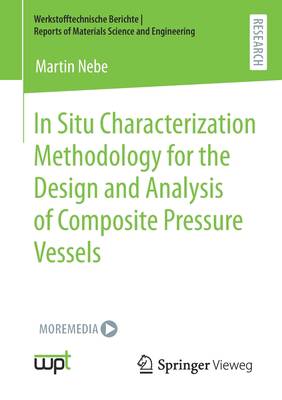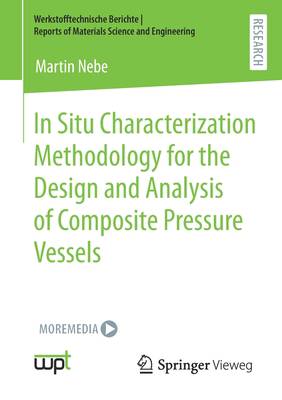
Bedankt voor het vertrouwen het afgelopen jaar! Om jou te bedanken bieden we GRATIS verzending aan op alles gedurende de hele maand januari.
- Afhalen na 1 uur in een winkel met voorraad
- Gratis thuislevering in België
- Ruim aanbod met 7 miljoen producten
Bedankt voor het vertrouwen het afgelopen jaar! Om jou te bedanken bieden we GRATIS verzending aan op alles gedurende de hele maand januari.
- Afhalen na 1 uur in een winkel met voorraad
- Gratis thuislevering in België
- Ruim aanbod met 7 miljoen producten
Zoeken
In Situ Characterization Methodology for the Design and Analysis of Composite Pressure Vessels
Martin Nebe
€ 116,45
+ 232 punten
Omschrijving
With his work, Martin Nebe provides principal insights into the mechanical response of composite pressure vessels subjected to internal pressure. By establishing and validating an in situ characterization methodology, the vessel's geometry, its deformation behavior and the damage evolution process under internal pressure loading become accessible. This not only permits to trace back certain phenomena related to the manufacturing of these components but also allows to verify analytical and numerical modeling strategies. The exercised correlation of predicted and experimental results delivers detailed insights into design considerations to composite pressure vessels such as the definition of stacking sequence. The transfer of knowledge to a fullscale vessel geometry, which is representative for the use in fuel cell electric vehicles underlines the industrial application of this work. By combining numerical modeling, filament winding and experimental characterization, this work provides asound foundation for future developments in the area of composite pressure vessels used for hydrogen storage.
Specificaties
Betrokkenen
- Auteur(s):
- Uitgeverij:
Inhoud
- Aantal bladzijden:
- 179
- Taal:
- Engels
- Reeks:
Eigenschappen
- Productcode (EAN):
- 9783658357962
- Verschijningsdatum:
- 22/01/2022
- Uitvoering:
- Paperback
- Formaat:
- Trade paperback (VS)
- Afmetingen:
- 148 mm x 210 mm
- Gewicht:
- 263 g

Alleen bij Standaard Boekhandel
+ 232 punten op je klantenkaart van Standaard Boekhandel
Beoordelingen
We publiceren alleen reviews die voldoen aan de voorwaarden voor reviews. Bekijk onze voorwaarden voor reviews.












